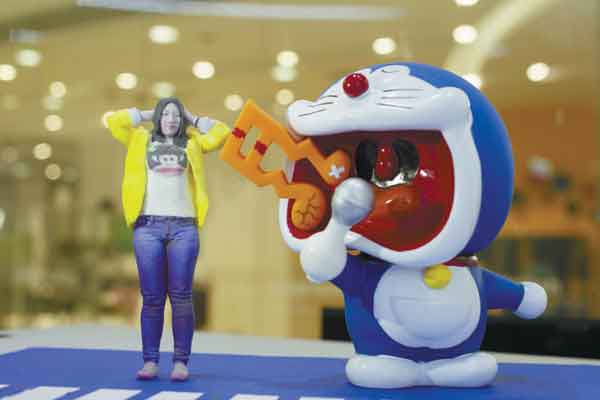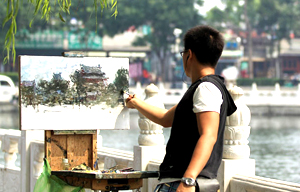More people flock to have their 'mini-me' printed
Updated: 2013-06-18 16:53
By Xu Junqian and Jiang Yinan (China Daily)
|
||||||||
 |
|
3-D images produced by Epoch Time Machine, a photography studio dedicated to 3-D printing. It is the first studio of its kind in Shanghai. [Photo by Gao Erqiang/China Daily] |
Having a profile sketched, a sculpture done, or a studio photograph taken is not in vogue anymore. The latest trend is having a 3-D image of oneself printed.
With the widespread and increasing affordability of 3-D printing technology, young and old people in China are showing a spike in interest to have a 3-D picture taken for the price of an iPad Mini.
"People are curious and the response has been overwhelming," says Le Meihao, the co-founder of Epoch Time Machine, a photography studio dedicated to 3-D printing. It is the first studio of its kind in Shanghai.
Opened in early May, the less than 40-square-meter shop sits on the second floor of a rather lonely shopping mall in the city's People's Square. It has printed at least 40 3-D photographs or "mini people" in the past month. Every day, scores of curious people visit the cramped room, to have a closer look at the end product, to ask about the cost and have their "mini-me" printed.
"We only have the capacity to print two or three models every day. That's the main problem we face in growing our business," says the 27-year-old Le, a Shanghai native and a finance graduate.
Inspired by a Japanese 3-D printing shop, Le, together with three friends, invested 1.2 million yuan ($194,000), mostly sponsored by their parents. They call their investment "the future of industrial manufacturing".
One of the partners, 26-year-old Shao Qizhe, has also been a student of Behrokh Khoshnevis, an engineering professor from the University of Southern California, who has figured out a way to print a house.
The process to "print a person" is simple, or so it seems.
The person stands on a special plate which looks like a Lazy Susan, against a green background. As the plate rotates, two scanners take a full-length scan of the subject, one catching details and the other the general picture. The images are immediately sent to a computer and processed before being printed out using the imported ZPrinter 650, the biggest investment of the shop, according to Le.

 'Taken 2' grabs movie box office crown
'Taken 2' grabs movie box office crown
 Rihanna's 'Diamonds' tops UK pop chart
Rihanna's 'Diamonds' tops UK pop chart
 Fans get look at vintage Rolling Stones
Fans get look at vintage Rolling Stones
 Celebrities attend Power of Women event
Celebrities attend Power of Women event
 Ang Lee breaks 'every rule' to make unlikely new Life of Pi film
Ang Lee breaks 'every rule' to make unlikely new Life of Pi film
 Rihanna almost thrown out of nightclub
Rihanna almost thrown out of nightclub
 'Dark Knight' wins weekend box office
'Dark Knight' wins weekend box office
 'Total Recall' stars gather in Beverly Hills
'Total Recall' stars gather in Beverly Hills
Most Viewed
Editor's Picks

|

|

|

|

|

|
Today's Top News
Shenzhou X astronaut gives lecture today
US told to reassess duties on Chinese paper
Chinese seek greater share of satellite market
Russia rejects Obama's nuke cut proposal
US immigration bill sees Senate breakthrough
Brazilian cities revoke fare hikes
Moody's warns on China's local govt debt
Air quality in major cities drops in May
US Weekly

|

|









